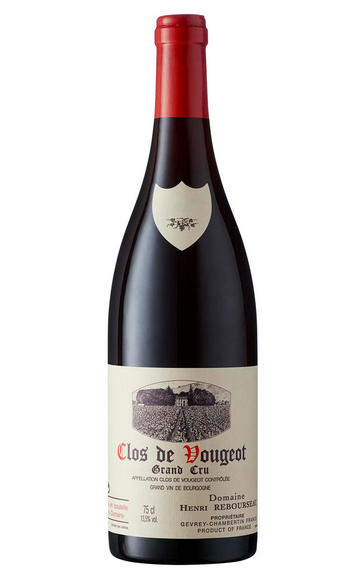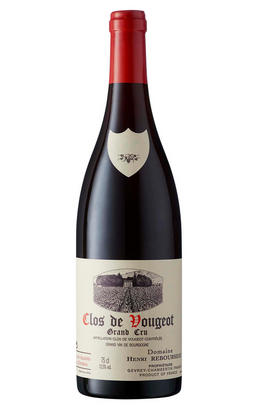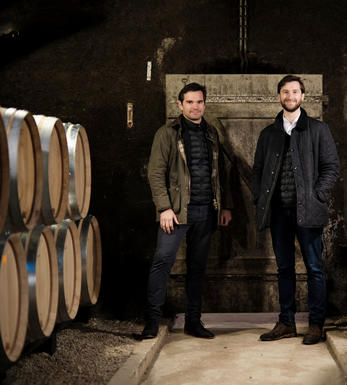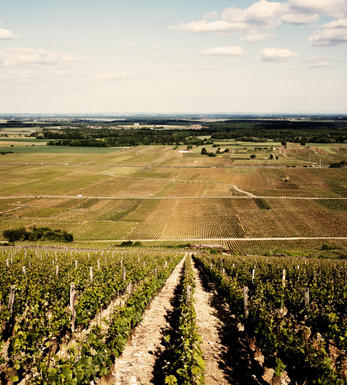
2018 Clos de Vougeot, Grand Cru, Domaine Henri Rebourseau, Burgundy

Critics reviews
The domain-owned 2.21-hectare block (the third-largest holding in the Clos) is mainly split between the sections known as the Clos Quartier de Marei Bas and the Baudes Saint-Martin, with a bit of Grand Maupertuis and a sliver of Baudes Hautes.
The 2018 opened slowly to reveal a plummy fruit generously accented with oak. Gradually a smoky note develops that recalls the heat of the year.
The weight on the palate is significant, and the texture is velvety, with surprising freshness for the vintage. The tannins, however, are substantial and astringent, which cuts the finish short.
Drink 2029 - 2039
Charles Curtis MW, Decanter.com (March 2021)
About this WINE

Domaine Henri Rebourseau
Domaine Henri Rebourseau is a wine estate in Burgundy. With its headquarters just outside the village of Gevrey Chambertin, the domaine covers 13.5 hectares of vines across the Côte de Nuits.
A considerable 5.28 hectares are in Grand Cru vineyards, including holdings in Chambertin, Clos-de-Bèze, and Clos de Vougeot. Brothers Benigne and Louis de Surrel represent the seventh generation of their family here; their great-great-grandfather was Henri Rebourseau.
The estate has been farmed organically since 2006, and biodynamically since 2008. It is now part of the SCDM Domaines group, along with other leading French properties including Château Montrose in Bordeaux and Clos Rougeard in the Loire Valley.

Vougeot
Most of the wine produced in this small village comes from a single, walled Grand Cru vineyard, the famous Clos de Vougeot. The vineyard in its present form dates from 1336 (when it was first planted by monks of Cîteaux), although it was not until the following century that it was entirely enclosed by stone walls.
Clos de Vougeot is both the smallest commune and the largest Clos in the Cote d’Or. It consists of 50 hectares of vineyards shared among 82 owners, with six soil types. There is quite a difference in quality between the upper (best) and lower (least fine) parts of the vineyard, though in medieval times a blend from all sectors was considered optimum.Le Domaine de la Vougeraie makes a very fine white wine from Le Clos Blanc de Vougeot, first picked out by the monks of Cîteaux as being suitable ground for white grapes in the year 1110.
- Five hectares of village Vougeot
- 12 hectares of Premier Cru vineyards (four in all): Les Cras, Les Petits-Vougeots, Clos de la Perrière and Clos Blanc de Vougeot
- 51 hectares of Grand Cru vineyard – Clos de Vougeot
- Recommended producers: Domaine de la Vougeraie, Domaine Bertagna, Engel, Anne Gros, Grivot, Liger-Belair, Meo-Camuzet.

Pinot Noir
Pinot Noir is probably the most frustrating, and at times infuriating, wine grape in the world. However when it is successful, it can produce some of the most sublime wines known to man. This thin-skinned grape which grows in small, tight bunches performs well on well-drained, deepish limestone based subsoils as are found on Burgundy's Côte d'Or.
Pinot Noir is more susceptible than other varieties to over cropping - concentration and varietal character disappear rapidly if yields are excessive and yields as little as 25hl/ha are the norm for some climats of the Côte d`Or.
Because of the thinness of the skins, Pinot Noir wines are lighter in colour, body and tannins. However the best wines have grip, complexity and an intensity of fruit seldom found in wine from other grapes. Young Pinot Noir can smell almost sweet, redolent with freshly crushed raspberries, cherries and redcurrants. When mature, the best wines develop a sensuous, silky mouth feel with the fruit flavours deepening and gamey "sous-bois" nuances emerging.
The best examples are still found in Burgundy, although Pinot Noir`s key role in Champagne should not be forgotten. It is grown throughout the world with notable success in the Carneros and Russian River Valley districts of California, and the Martinborough and Central Otago regions of New Zealand.


Buying options
Add to wishlist
Description
The domain-owned 2.21-hectare block (the third-largest holding in the Clos) is mainly split between the sections known as the Clos Quartier de Marei Bas and the Baudes Saint-Martin, with a bit of Grand Maupertuis and a sliver of Baudes Hautes.
The 2018 opened slowly to reveal a plummy fruit generously accented with oak. Gradually a smoky note develops that recalls the heat of the year.
The weight on the palate is significant, and the texture is velvety, with surprising freshness for the vintage. The tannins, however, are substantial and astringent, which cuts the finish short.
Drink 2029 - 2039
Charles Curtis MW, Decanter.com (March 2021)
wine at a glance
Delivery and quality guarantee